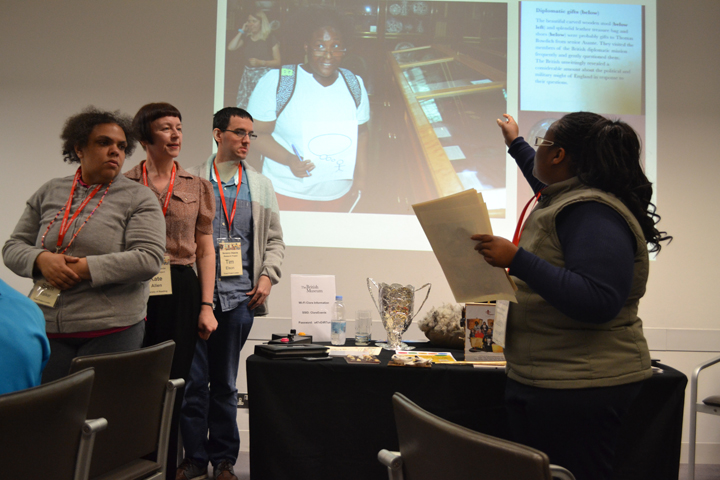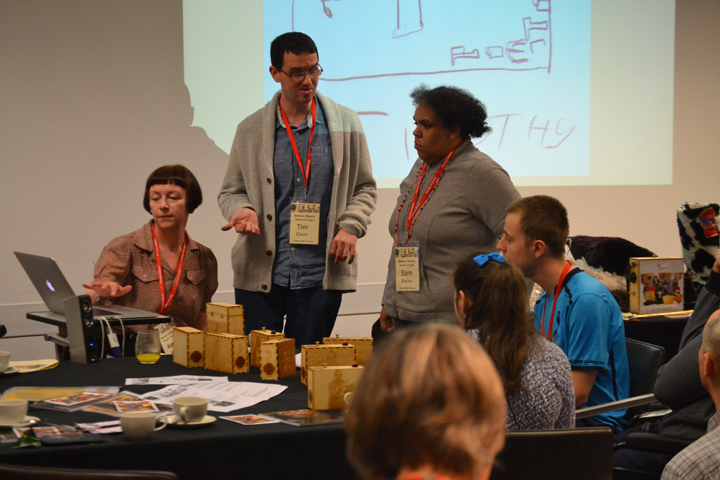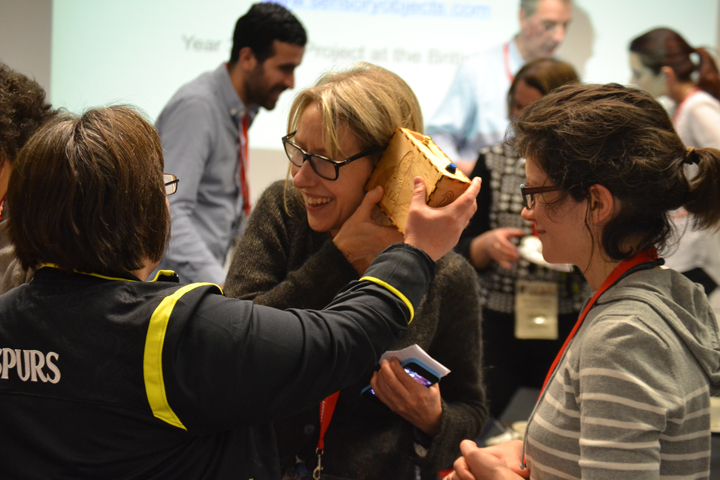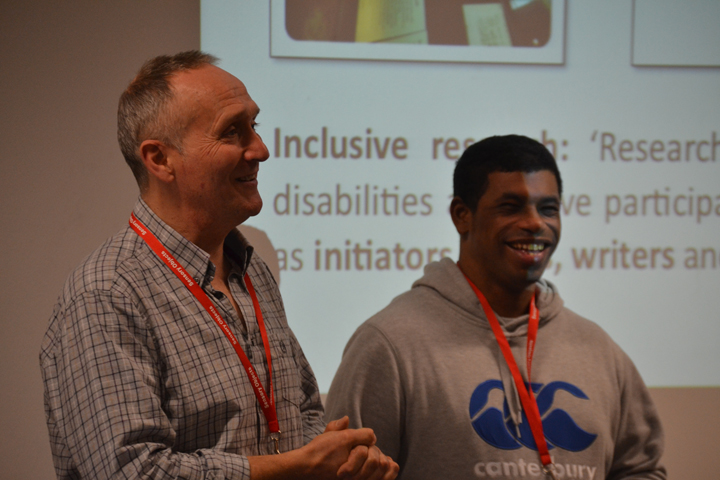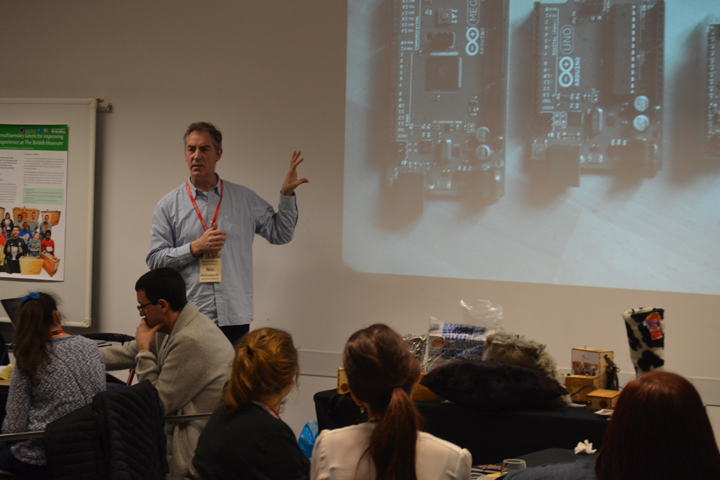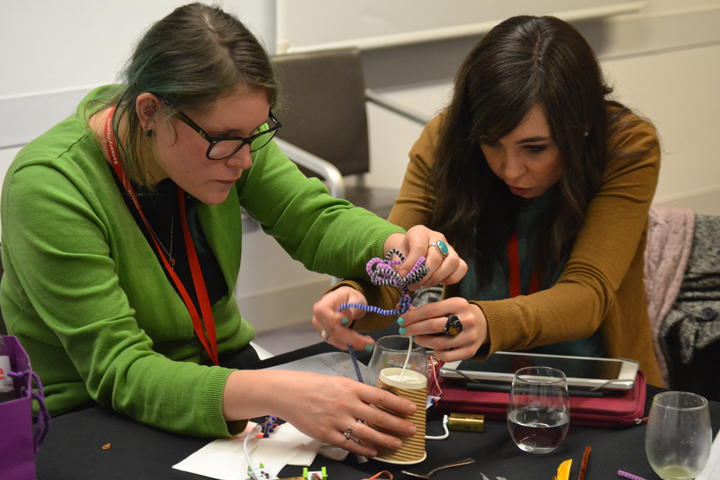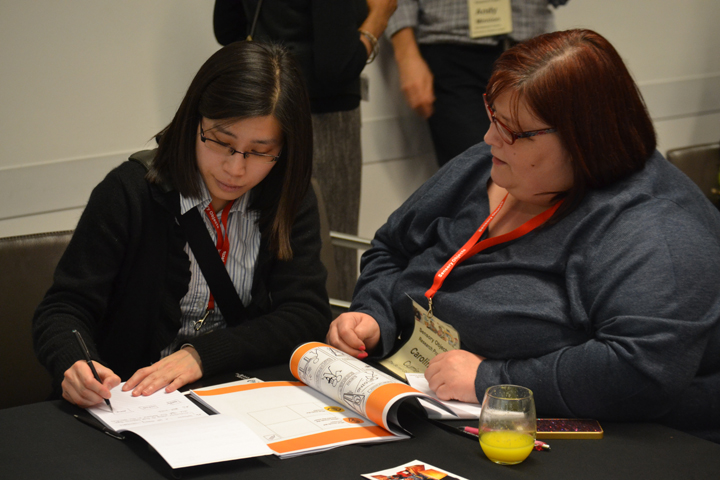Below is the easy read programme of our very successful Seminar at The British Museum. You can see a report of the Seminar on our Co-researchers Wiki
The picture below shows an image from our Co-researchers Wiki documenting Angela from Access to Heritage giving the first presentation of the Seminar about the Sensory Objects at Speke Hall.
The picture below shows Angela showing her scrap book to delegates.
Next was a presentation from year two of the Sensory Objects Project at the Museum of English Rural Life (MERL) with Co-researchers from Reading College Learners with Learning Difficulties and Disabilities. The talk included a video featuring the Director of MERL talking about the influence of Sensory Objects project on the redesign of MERL
Impact of Sensory Objects by Kate Arnold Forster Director of MERL
I just wanted to mention a couple of small examples of how we are beginning to take forward the Sensory Objects work into the new interpretation plans for MERL We are currently working on developing the ideas for the interactive in the new galleries and has already a couple where the Reading College project has definitely informed our thinking. Both are quite simple, but you can probably see how they link back to your project. We are developing a gallery called the Wagon Walk – a space where we will bring together all of our farm wagons and aim to interpret them in multiple ways. However, one important facet to the different designs for farm wagons is the relationship between different regional types of wagon and topography. Wagons designed for mainly flat terrain are different to those for hilly areas of areas with narrow winding lanes, for example. So we are going to create a 3D map of the landscape that visitors can touch and explore as a way of understanding about landscape and topography. The other example is that we will be creating a model farm that visitors can explore and interact with, but it will include smells and noises (not sure quite how yet) but that is the plan.
At a slightly different level we have now undertaken a piece of work to develop new approaches to tactile access to our collections as it is clear that as a result of Sensory Objects and other audience feedback our visitors are keen to handle and interact with real objects as part of their visitor experience. We have developed a scheme to enable us to make more collections available for handling and so that it is acceptable to curators, conservators as well as our audiences. This is an area of wider interest within the museums community and we are sharing this work with a training seminar next month (funded by ACE) and there is interest from the Collections Trust in incorporating this new protocol into the next round of SPECTRUM – the museums standard for collections care (so a piece of impact of policy and practice).
The next presentation in the picture below was by Co-researchers Tim, Judith and Sam from the Tower Project. They explained the process of developing Sensory Labels for the Enlightenment Gallery at The British Museum.
The picture below shows Sam and her first Sensory Postcard.
The picture below shows Tim talking about his drawing of a plane that he wanted to be engraved in wood. His idea inspired everyone to have their drawings laser cut into wood.
Then the co-researechers invited all the delegates to try their sensory labels during lunch.
After lunch Ajay gave a presentation from his diary about the project including our Pop Up Musuem
Next Kelly, Ryan and Justin co-presented with Andy about using Wikis to help reflect and develop their research ideas.
After Justin’s presentation Nic showed some of the electronics called Arduinos used inside the sensory objects to trigger sounds he also showed some of the workshop kit we have used during the project.
Nic also demonstrated two cushions that make noise when you stroke them.
Nic and Kassie then invited the delegates to try littlebits. The challenge was to create a creature in a cup.
Everyone had a go making a creature in a cup, then finally Andy led a discussion reflecting on the project and the Sensory Activities Guide.






